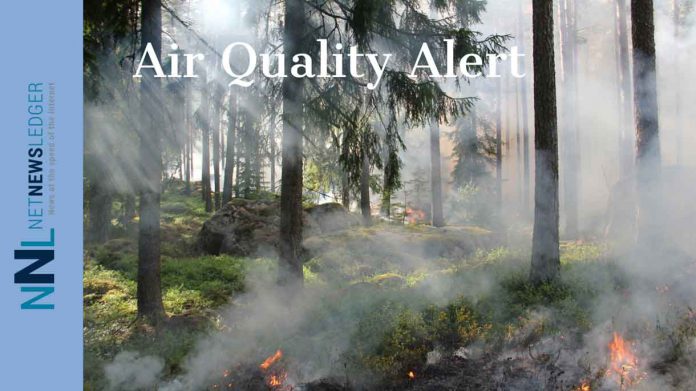Forest Fire Smoke Results in Deteriorated Air Quality
NORTHWESTERN ONTARIO – Air Quality Alerts continue for Ear Falls, Red Lake, Sachigo Lake, Kitchenuhmaykoosib Inninuwug, Dryden, Vermilion Bay, Ignace, Armstrong / Whitesand, Pickle Lake, Cat Lake, Webequie, Marten Falls, Summer Beaver, Sandy Lake, Deer Lake, Wunnumin Lake, Kingfisher Lake, Sioux Lookout and Savant Lake.
High levels of air pollution have developed in Northwestern Ontario due to smoke from ongoing forest fires. The smoke plumes from these fires have led to a significant decline in air quality across the region.
Potential Health Risks from Wildfire Smoke
Wildfire smoke can be harmful to everyone’s health, even at low concentrations. People with lung disease (such as asthma) or heart disease, older adults, children, pregnant people, and people who work outdoors are at higher risk of experiencing health effects caused by wildfire smoke.
Recommendations to Protect Health and Reduce Exposure
- Indoor Air Quality: Keep your indoor air clean. If the temperature inside your home is comfortable, keep your doors and windows closed. An air purifier with a High Efficiency Particulate Air (HEPA) filter can be used in the rooms where you spend a lot of time. Avoid air purifiers that produce ozone. Regularly check the filter and change it if required.
- Outdoor Activities: Cease outdoor activities and contact your healthcare provider if you or someone in your care experiences shortness of breath, wheezing (including asthma attacks), severe cough, dizziness or chest pains. If you are feeling unwell and experiencing symptoms, it is best to stay inside.
- Respite Locations: Temporarily relocating or finding a location in your community with clean, cool air, such as a library, shopping mall, or community centre, can provide a break from the smoke.
- Protective Equipment: If you must spend time outdoors, use a well-fitted respirator type mask (such as a NIOSH certified N95 or equivalent respirator) to reduce exposure to fine particles in smoke. However, respirators do not reduce exposure to the gases in wildfire smoke.
- Mental Health: Pay attention to your mental health during this time. It is normal to feel anxious or isolated during a smoke event. If you experience any feelings of stress, anxiety, or depression, contact your mental health care provider for advice or visit https://www.wellnesstogether.ca/en-CA.
- Evacuation Instructions: Follow instructions and direction from local authorities. Evacuate if told to do so.
- Medical Supplies: Review your wildfire smoke plan and ensure you have enough medical supplies if the smoke continues to impact your community. Contact your health care provider if your condition is not improving.
- Community Care: Keep a watchful eye on individuals in your care and those around you who may be more susceptible to smoke.
For more detailed information on how to reduce your health risk and your personal contribution to pollution levels, as well as for current and forecast Air Quality Health Index (AQHI) values, visit www.airhealth.ca.

